Quick BI offers flexible and diverse visual analytics by separating data and style configurations in the visualization configuration area, allowing for rapid creation of chart fields in the data manipulation area. This topic describes the general operations available on the dashboard edit page.
In visualization configuration, you can add necessary data to charts, configure styles, and set advanced options like filter interaction and redirection.
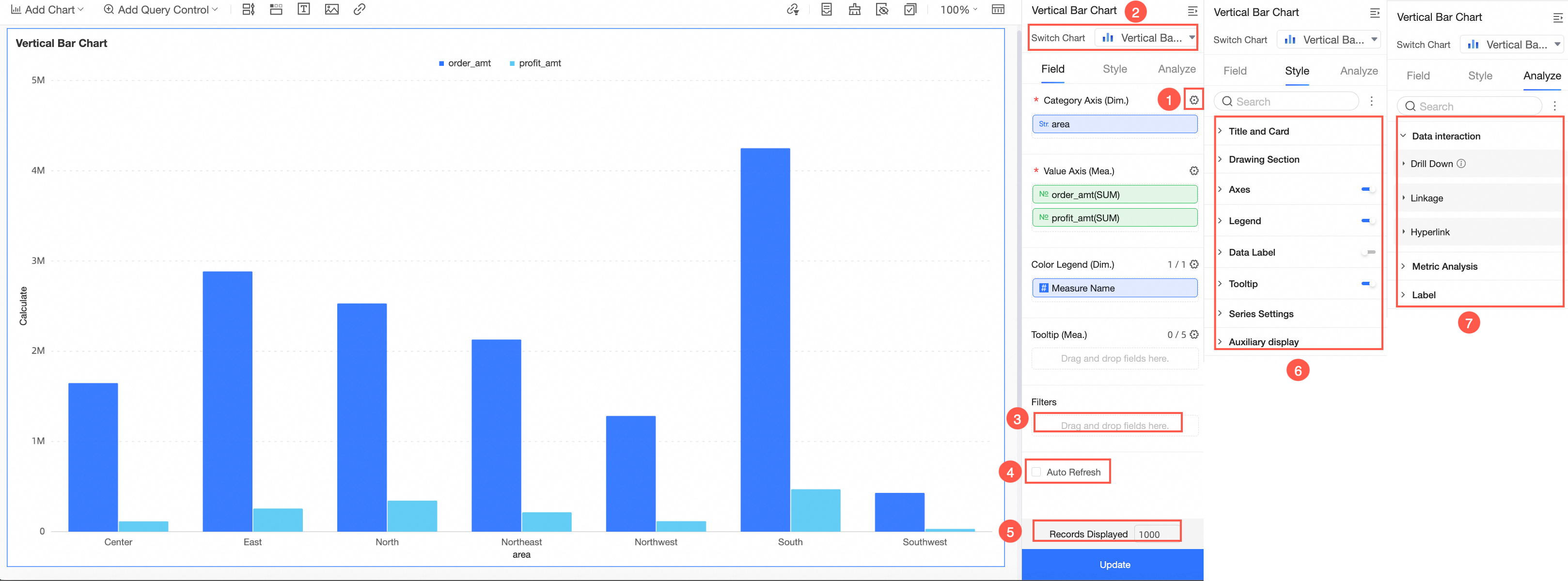
In data manipulation, you can process data for charts flexibly, enabling immersive analysis for analysts.
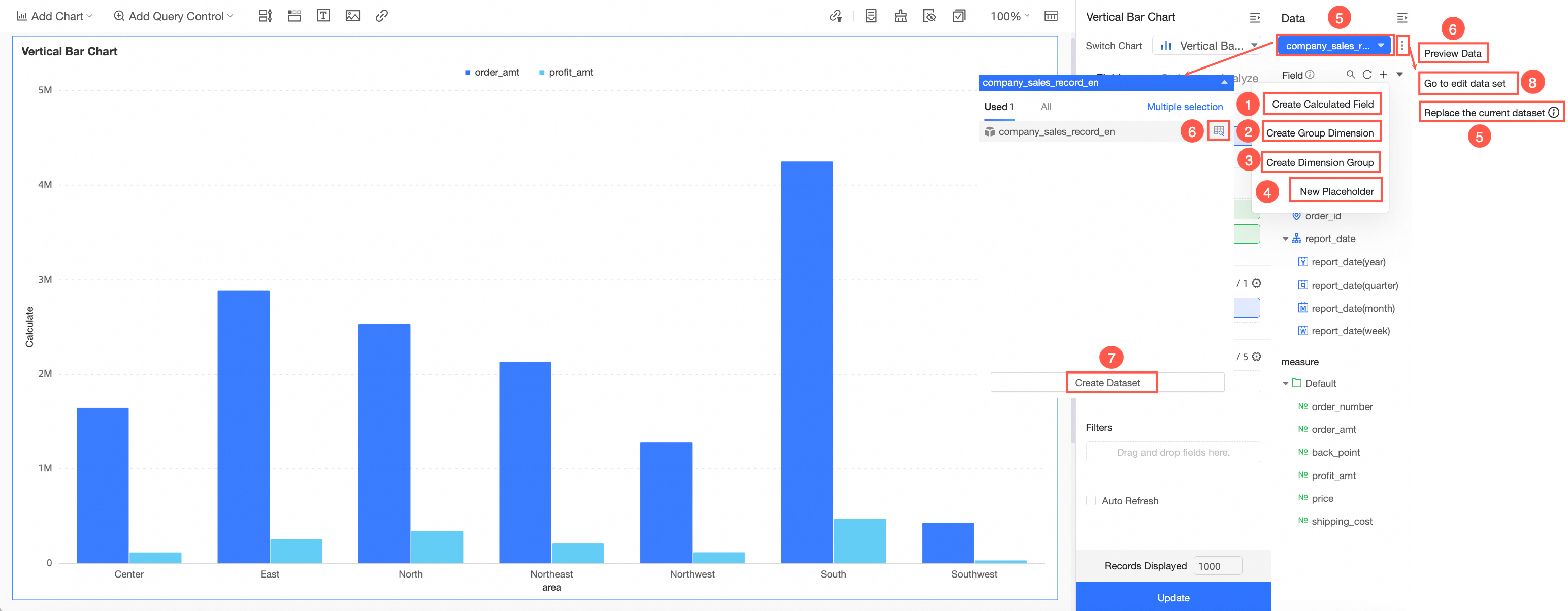
The following operations are available on the data manipulation page:
Visualization configuration
Configure visualized charts in the dashboard. Configuration includes fields, styles, and analysis.
Field configuration
Fields determine the data content displayed in charts. Different charts require specific field configurations. For information about the data elements supported by charts, see Scenarios for charts.
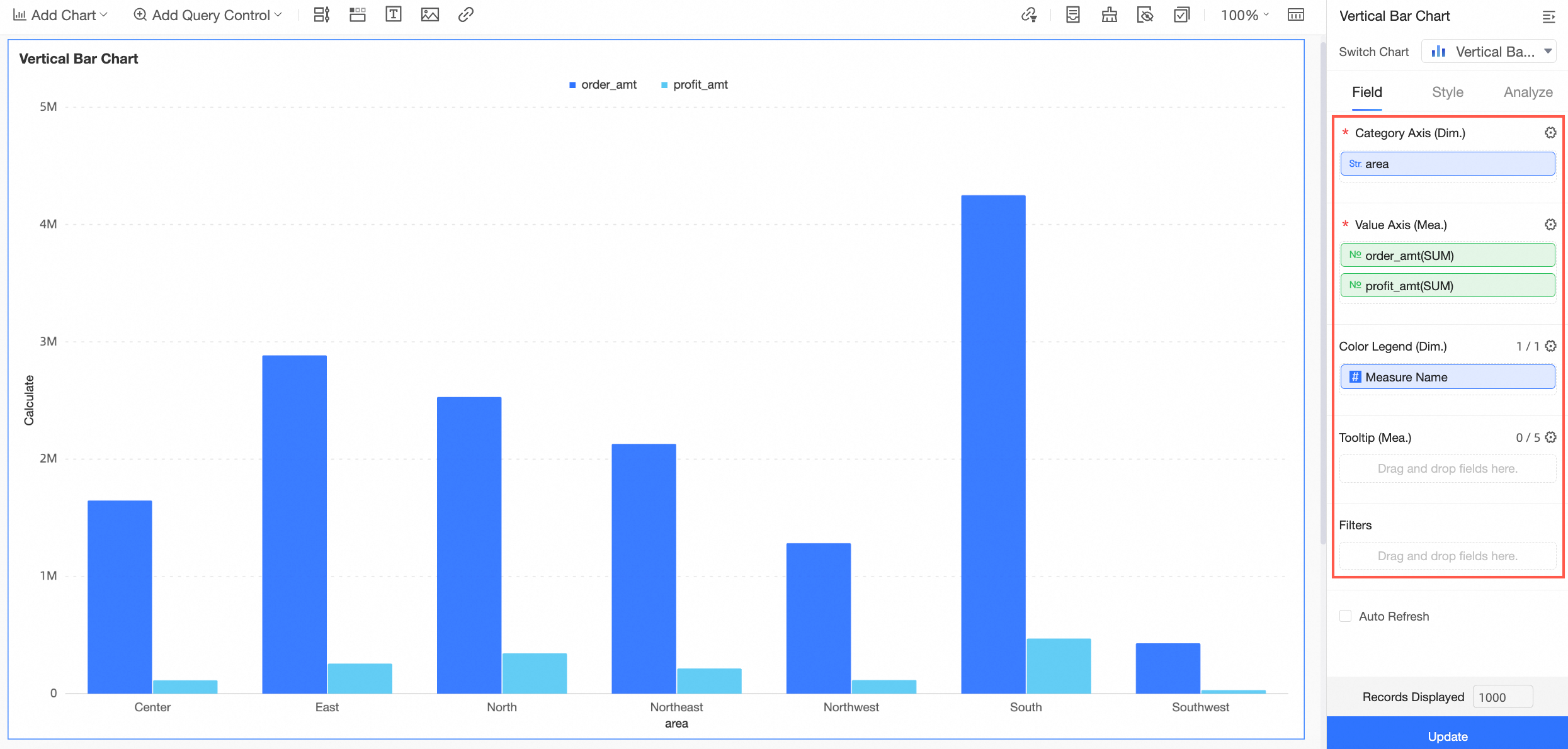
You can also perform the following operations on the field panel:
Batch configure fields
You can improve efficiency by batch configuring fields when multiple fields require reconfiguration.
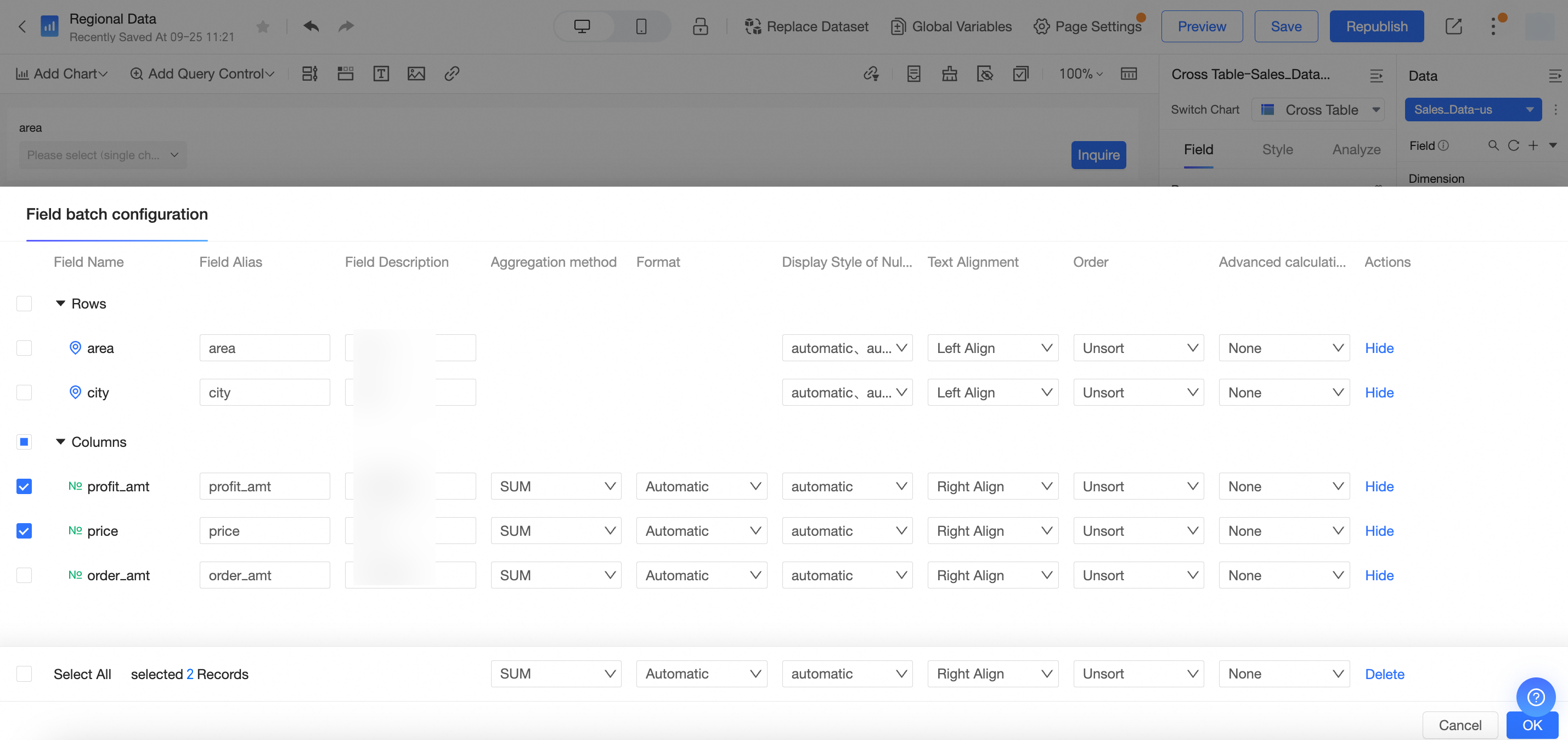
Simultaneously, when configuring the format of measure fields in batch, you have the option to select the custom method. This allows you to define the format for negative numbers within the numeric format, such as manually entering ##0.00%. For detailed configuration instructions, see configure chart fields.

Switch chart types
Switch chart types to alter the data display form to suit your business needs.
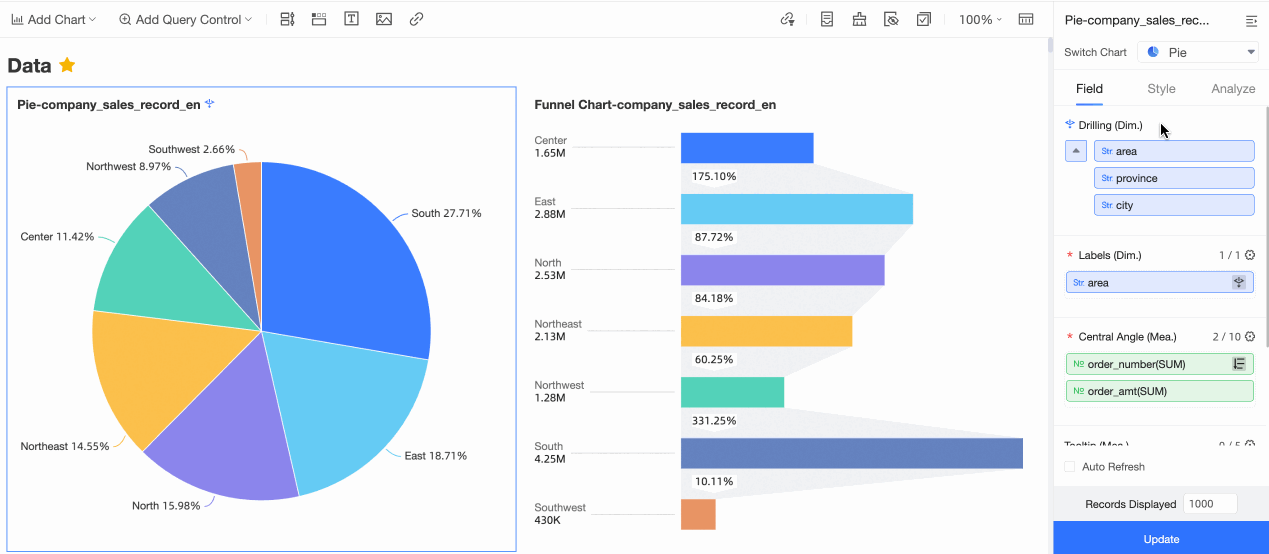
If the data elements of the current chart type do not match those of the selected chart type, the system provides instructions to help you adjust the data elements based on the current and selected chart types. Follow the instructions to add appropriate dimensions or measures to the correct data elements to complete the chart type switch.
Set filters
Use filters to refine data. For large datasets, enable filters and specify a range to ensure report accuracy.
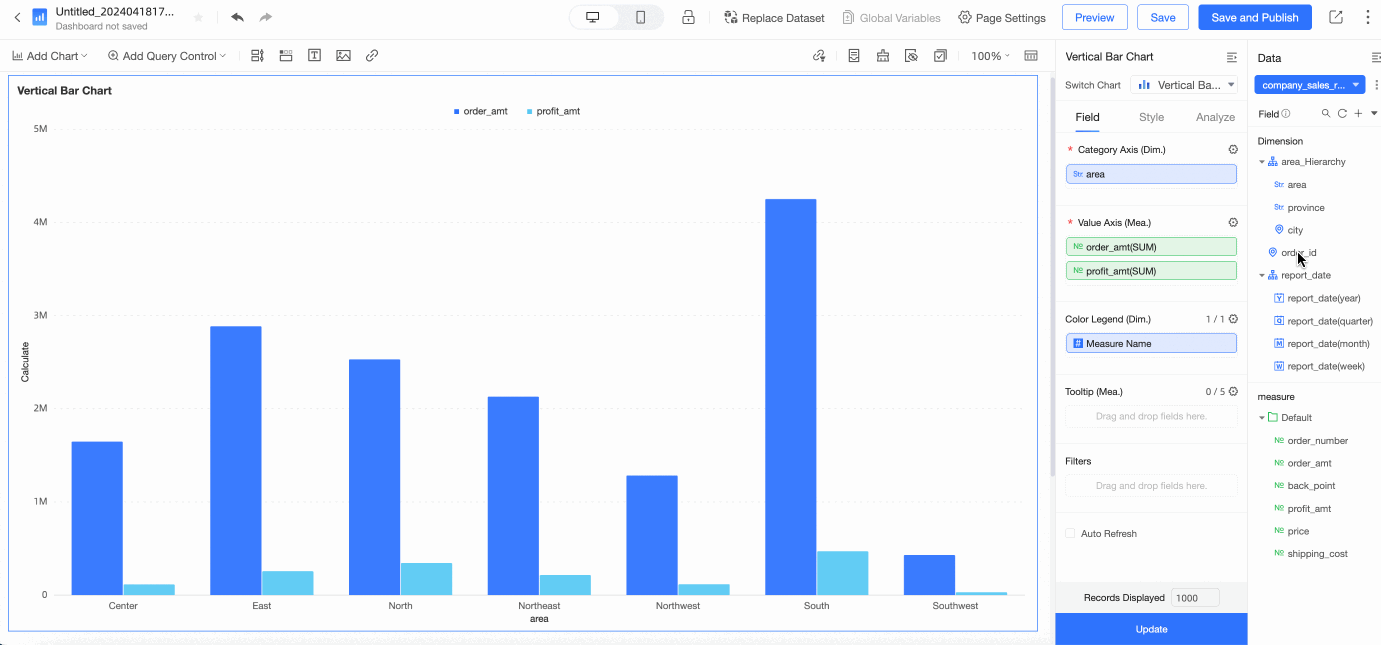
Auto-refresh chart data
By enabling Auto-refresh, the system will automatically update chart data at set intervals, such as every 5 minutes.
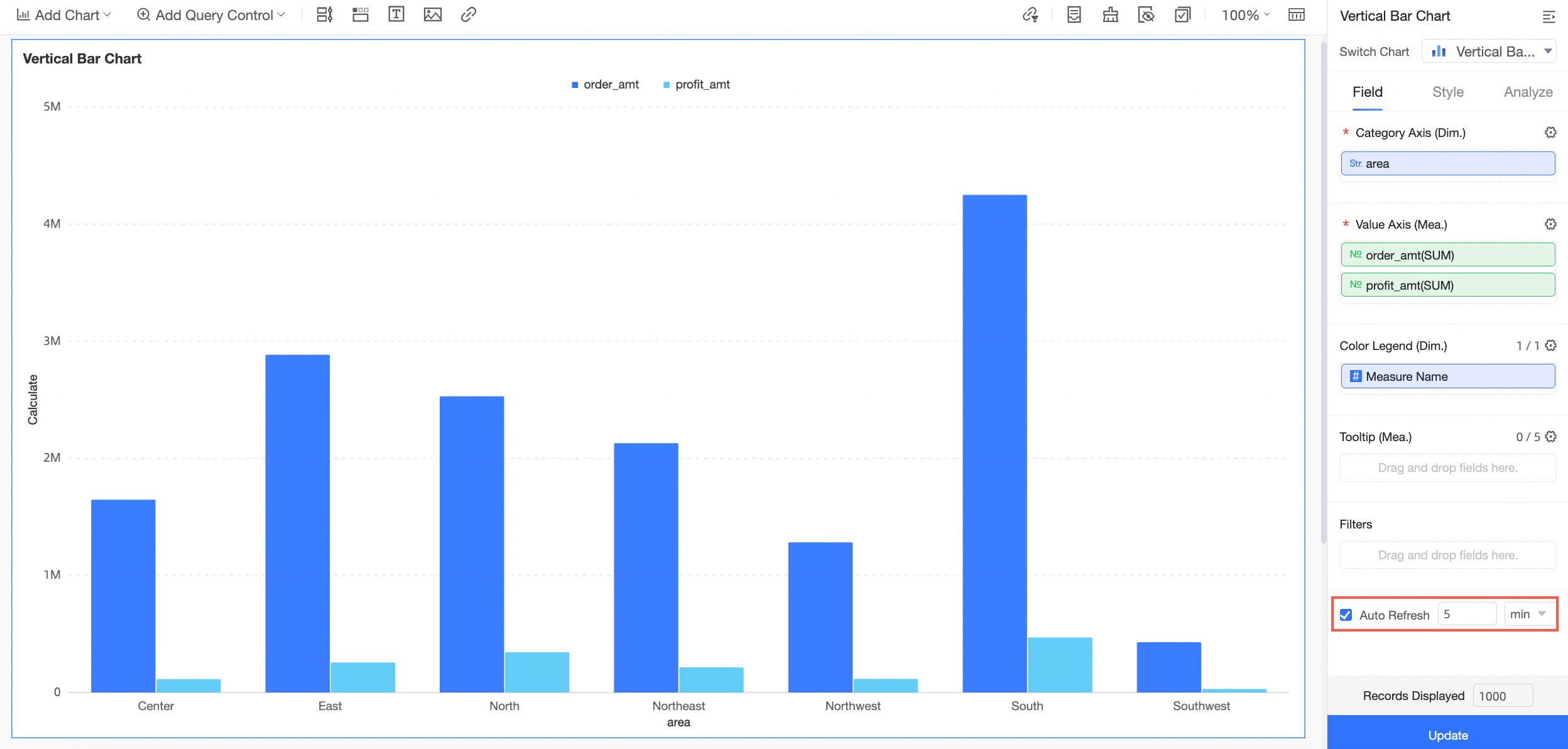
Set the number of preview rows
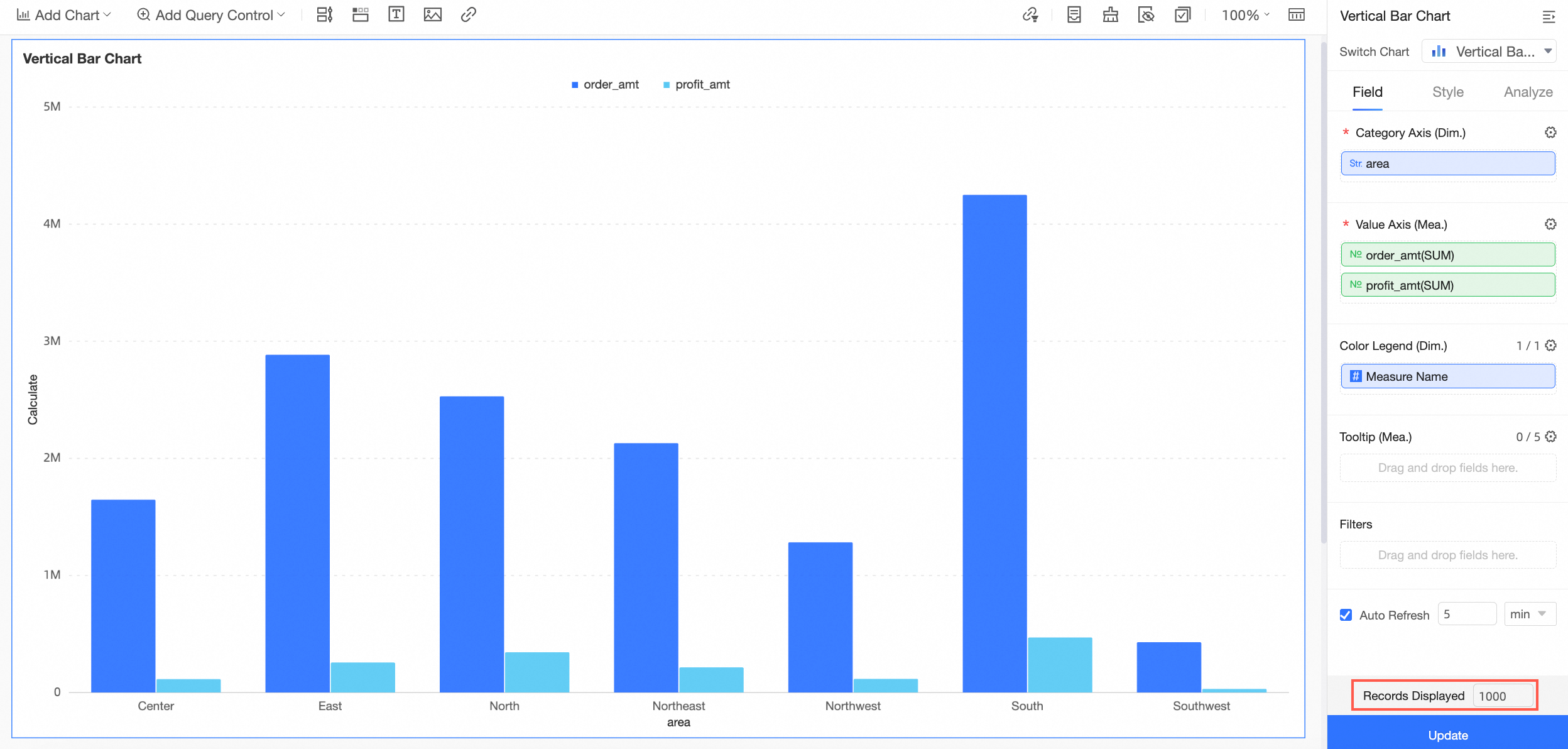
Style configuration
The Style tab allows you to determine the appearance and details of a chart. Configure the style based on your business requirements.
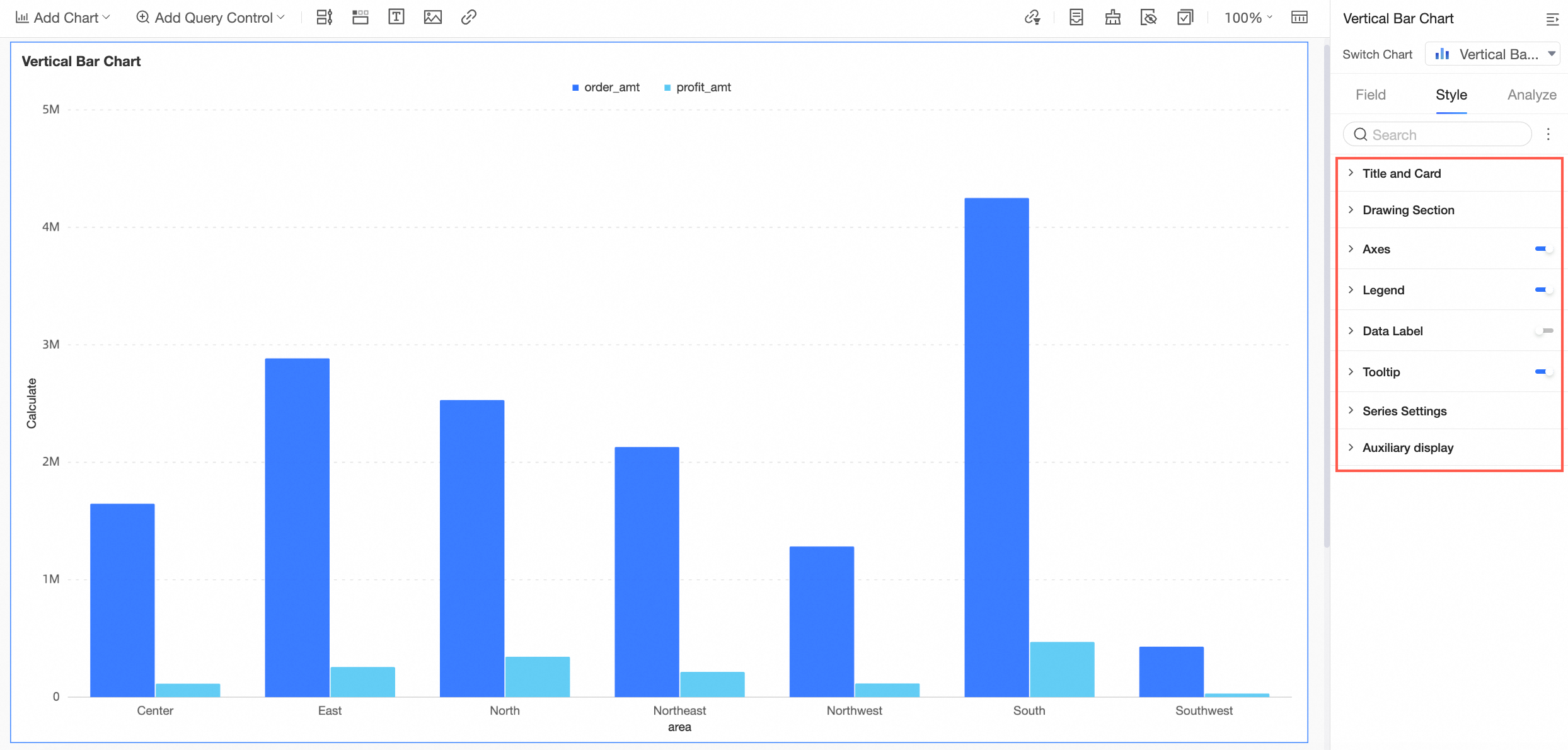
Different charts have unique style settings. For configuration examples, see Chart style configuration.
To quickly locate a specific configuration item, use the search box at the top. The system will display the relevant configuration options.
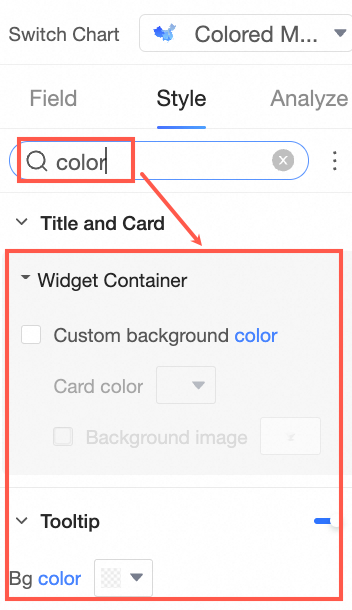
To expand all categories at once, click the ![]() icon to the right of the search box and select Expand all categories.
icon to the right of the search box and select Expand all categories.
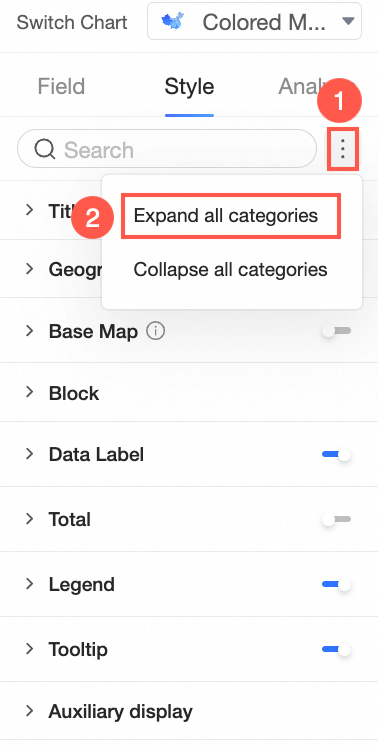
Analysis configuration
Configure the Advanced tab to set parameters that determine the association between data and multiple charts, enabling dynamic data interaction and comparison.
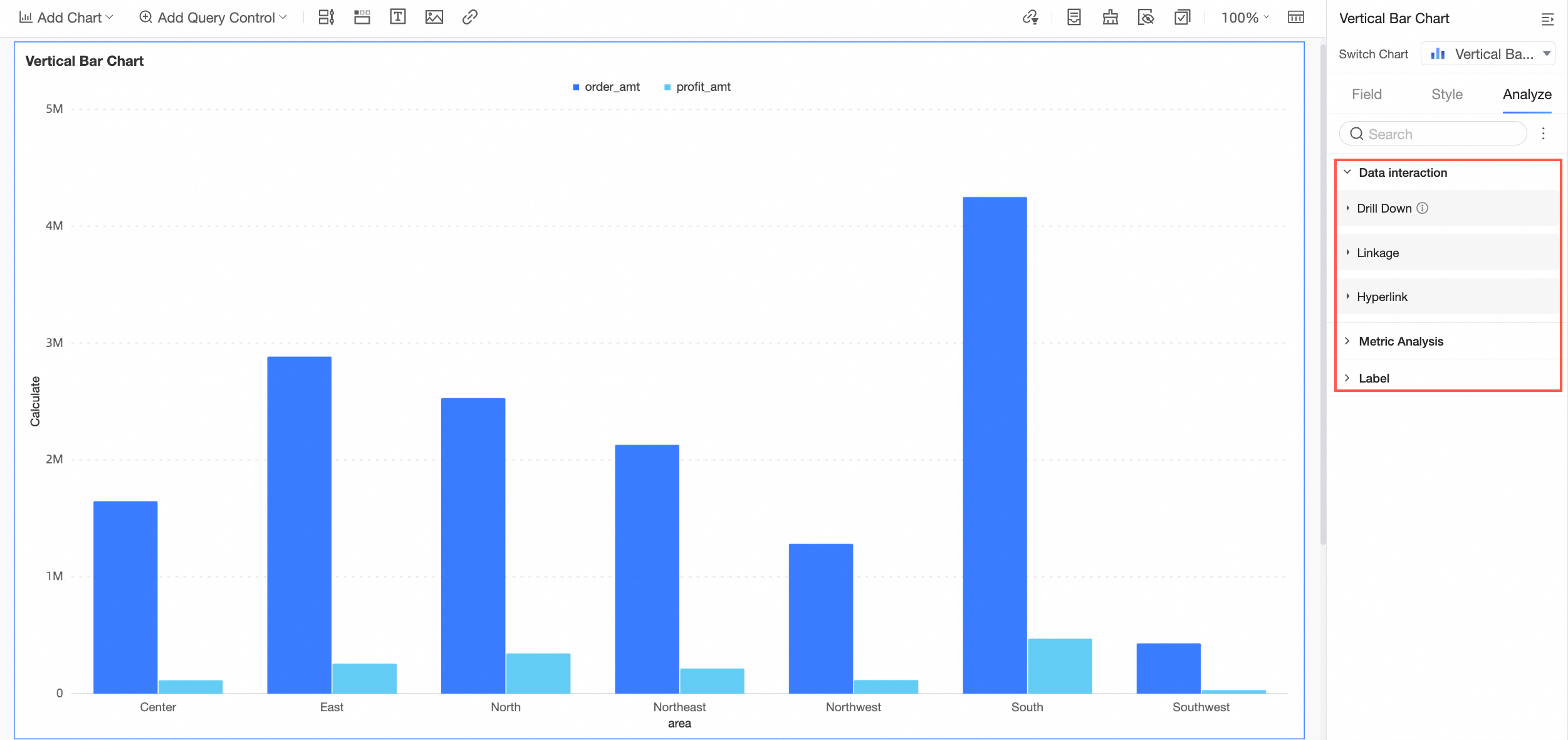
For more information, see Drilling, filter interaction, and redirection, Analysis alerts, and Annotations.
Data manipulation
Keep in mind the following when configuring data processing:
Calculated fields added to a chart are not saved in the dataset and are only available for the current chart.
If you create another chart using the same dataset, the previously added calculated field will not be retained.
However, if you copy a chart that includes a calculated field, and the copied chart uses the same dataset, the calculated field will be effective in the copied chart as well.
Data manipulation encompasses creating calculated fields, creating grouped dimensions, creating dimension groups, and creating placeholders:
Create calculated fields
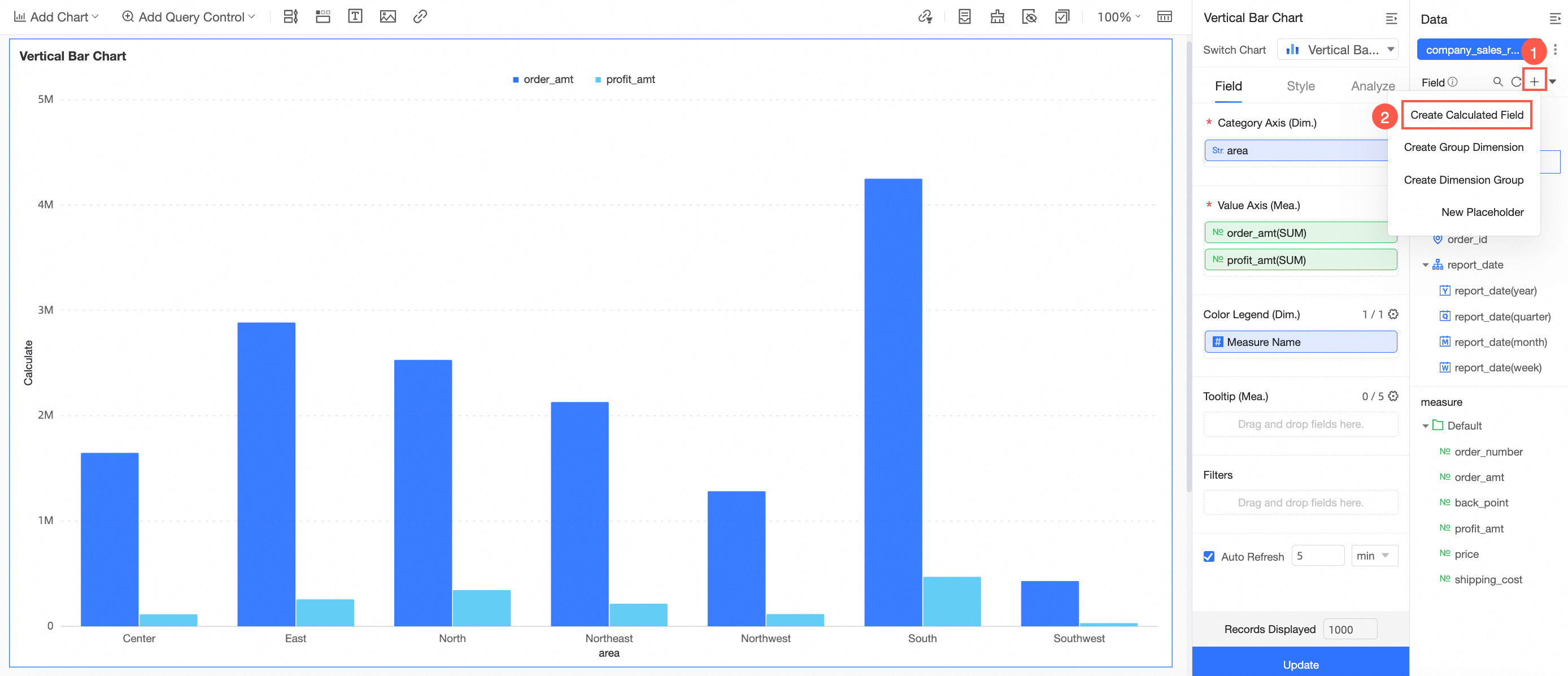
For detailed instructions, see Create calculated fields.
Create grouped dimensions
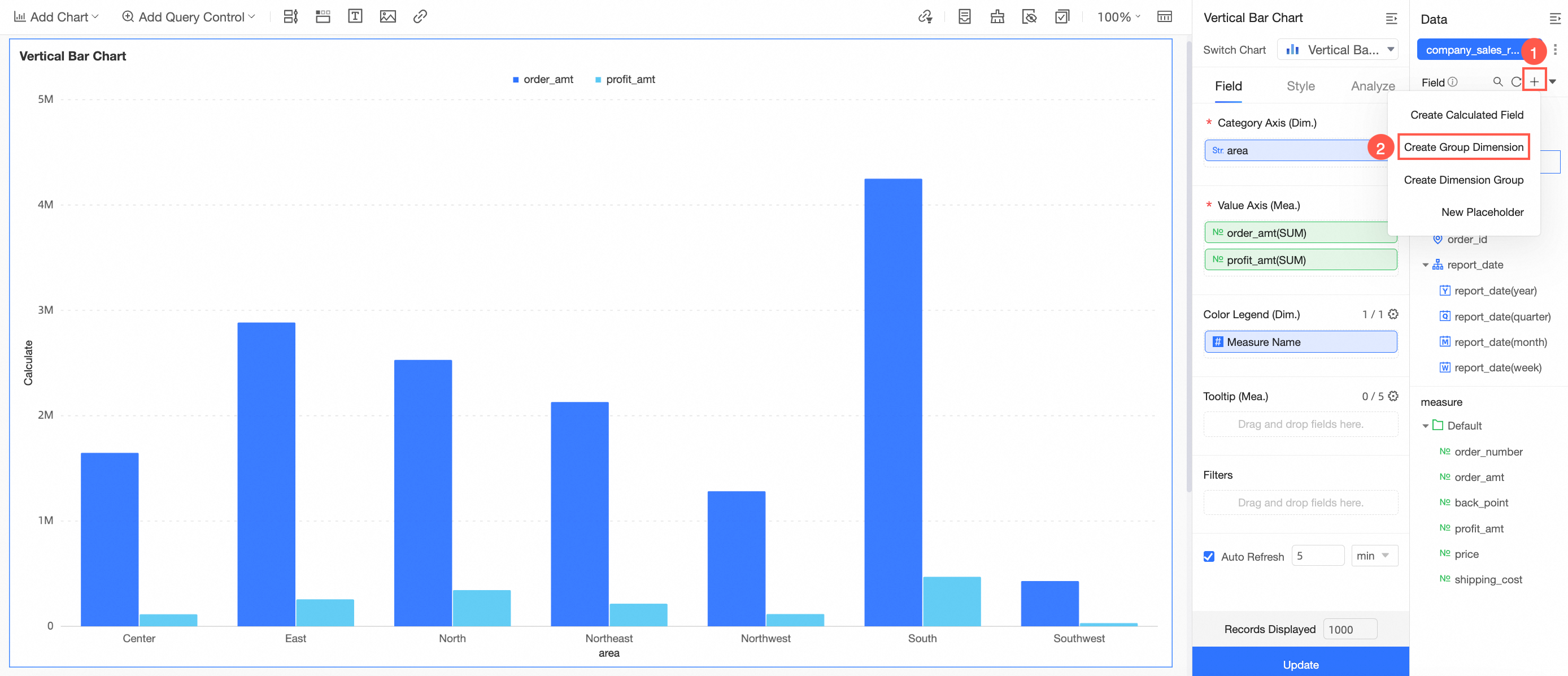
For detailed instructions, see Create grouped dimensions.
Create dimension groups
Access the interface for creating dimension groups by following the steps shown in the diagram.
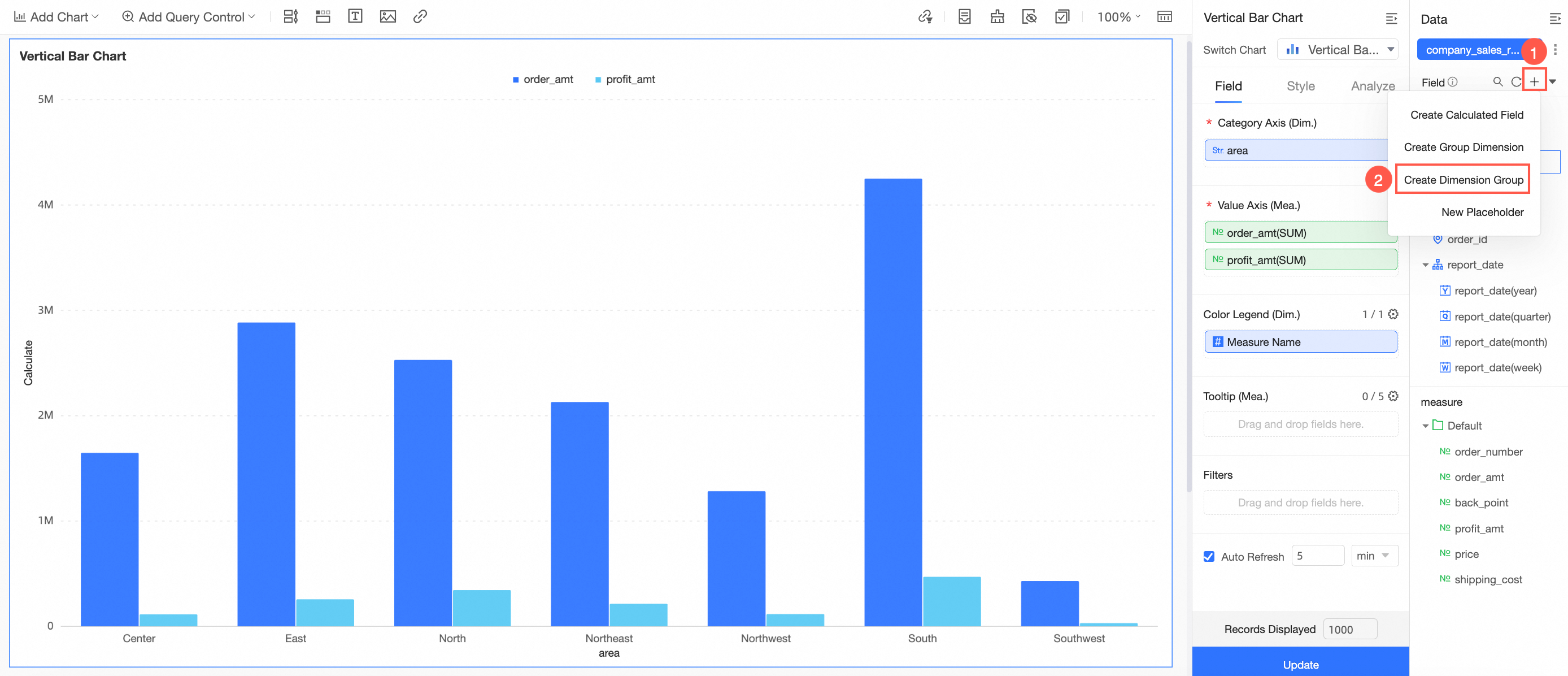
Create dimension group fields by following the steps shown in the diagram.
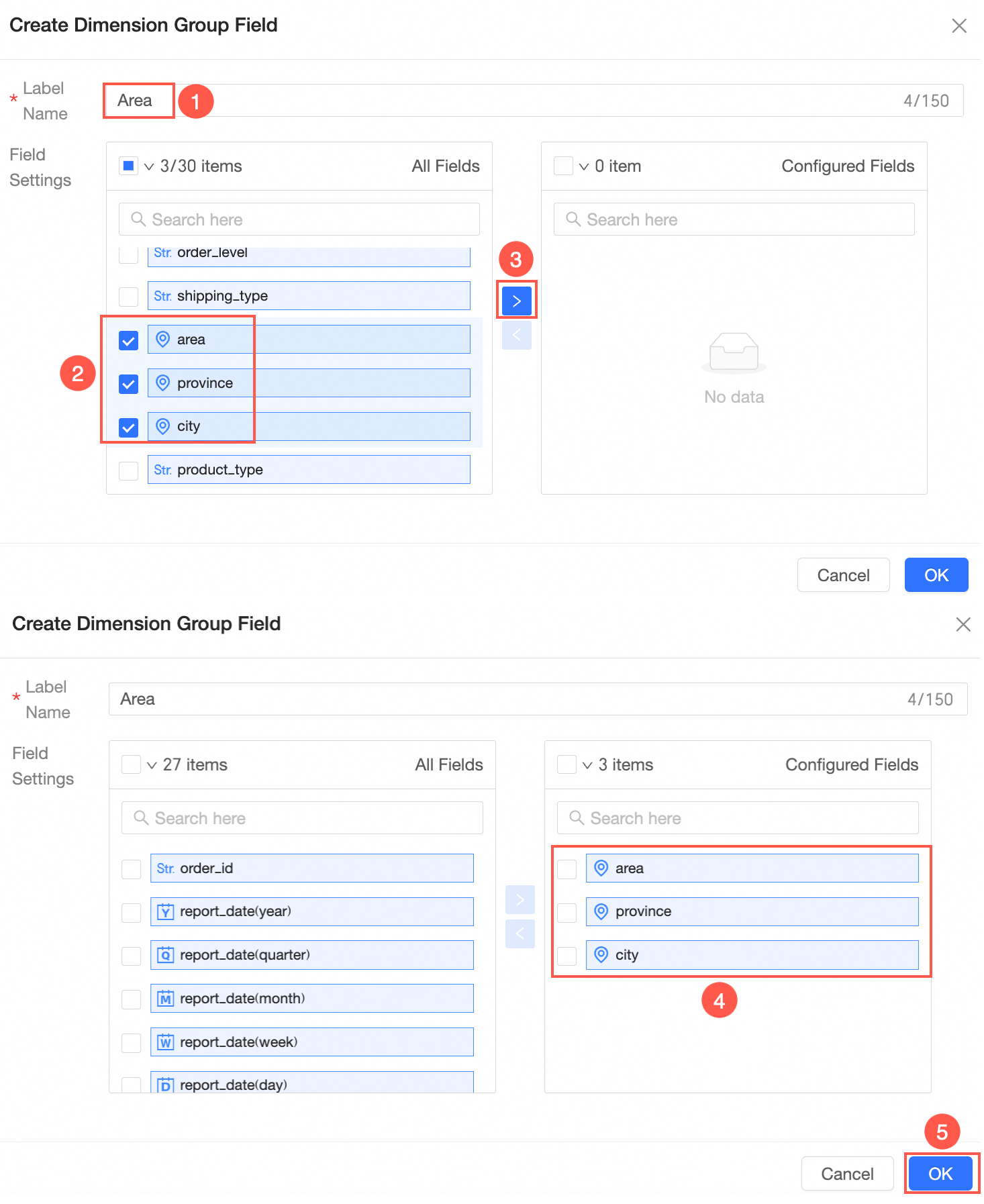
Drag the newly created dimension group to the dimension area and click Update to apply changes.
This allows you to switch between fields in the dimension group and view corresponding data.
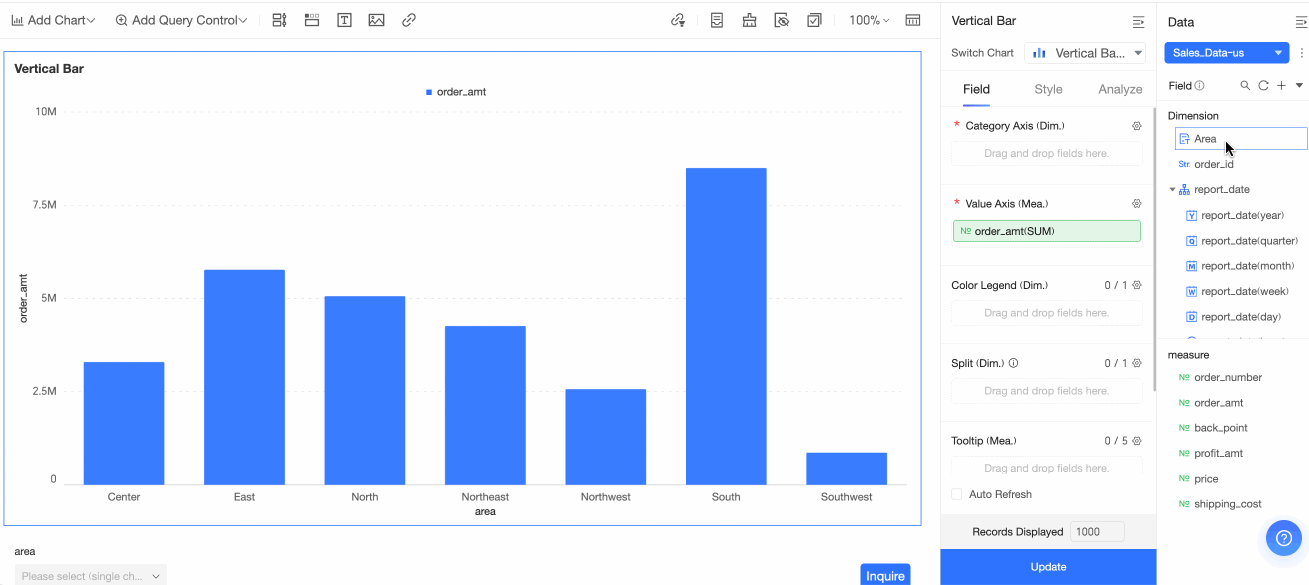
Create placeholders
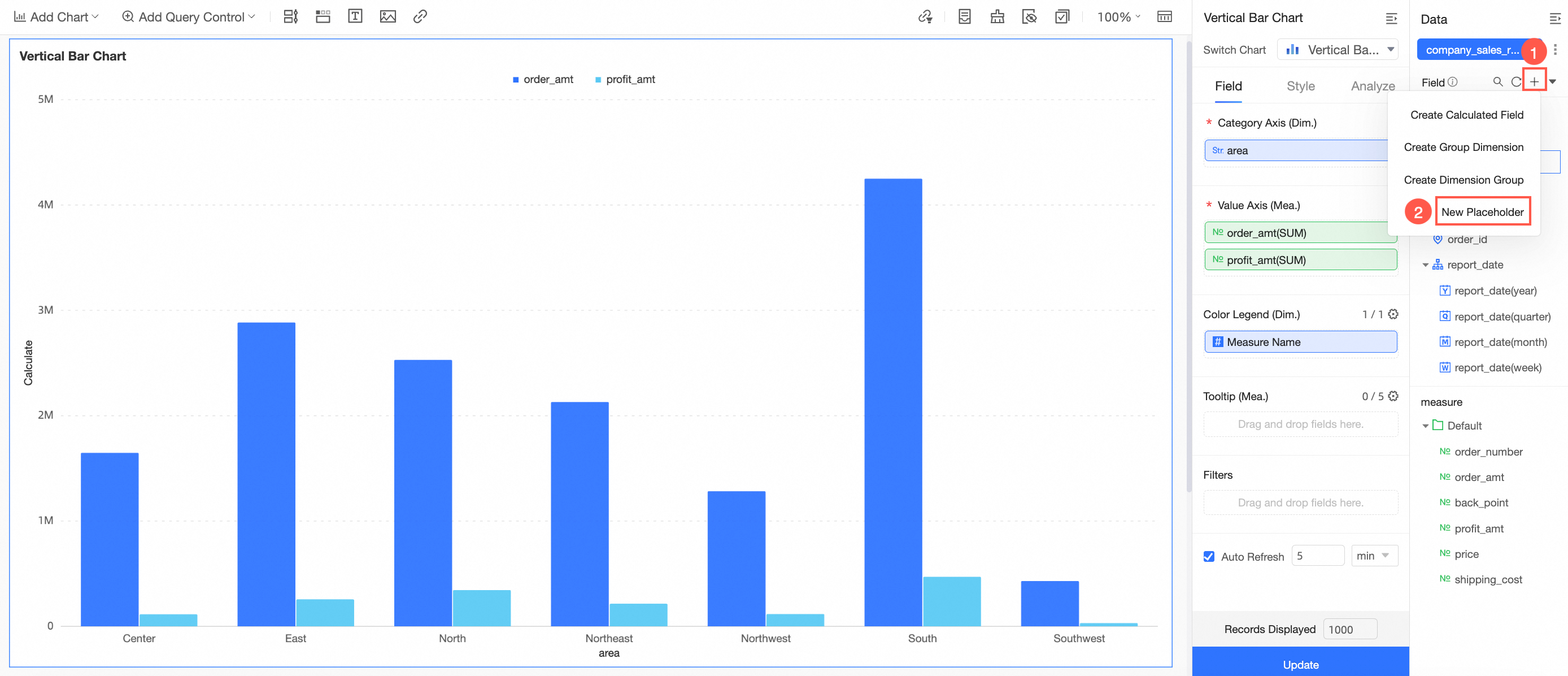
On the Create placeholders page, specify the variable name, variable type, and default query value.
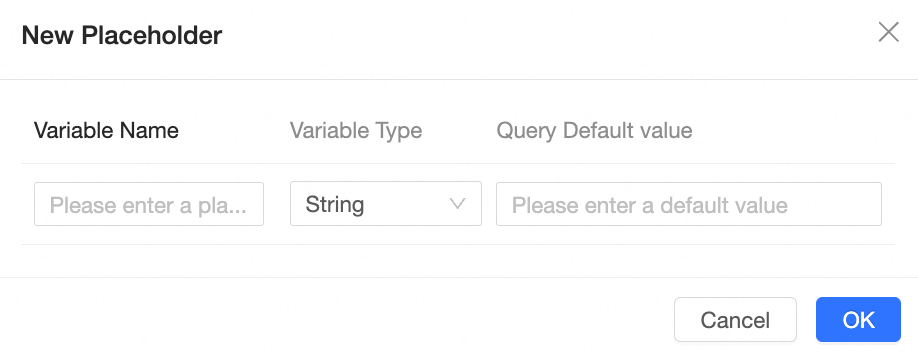
Once created, you can link the placeholder with query controls.
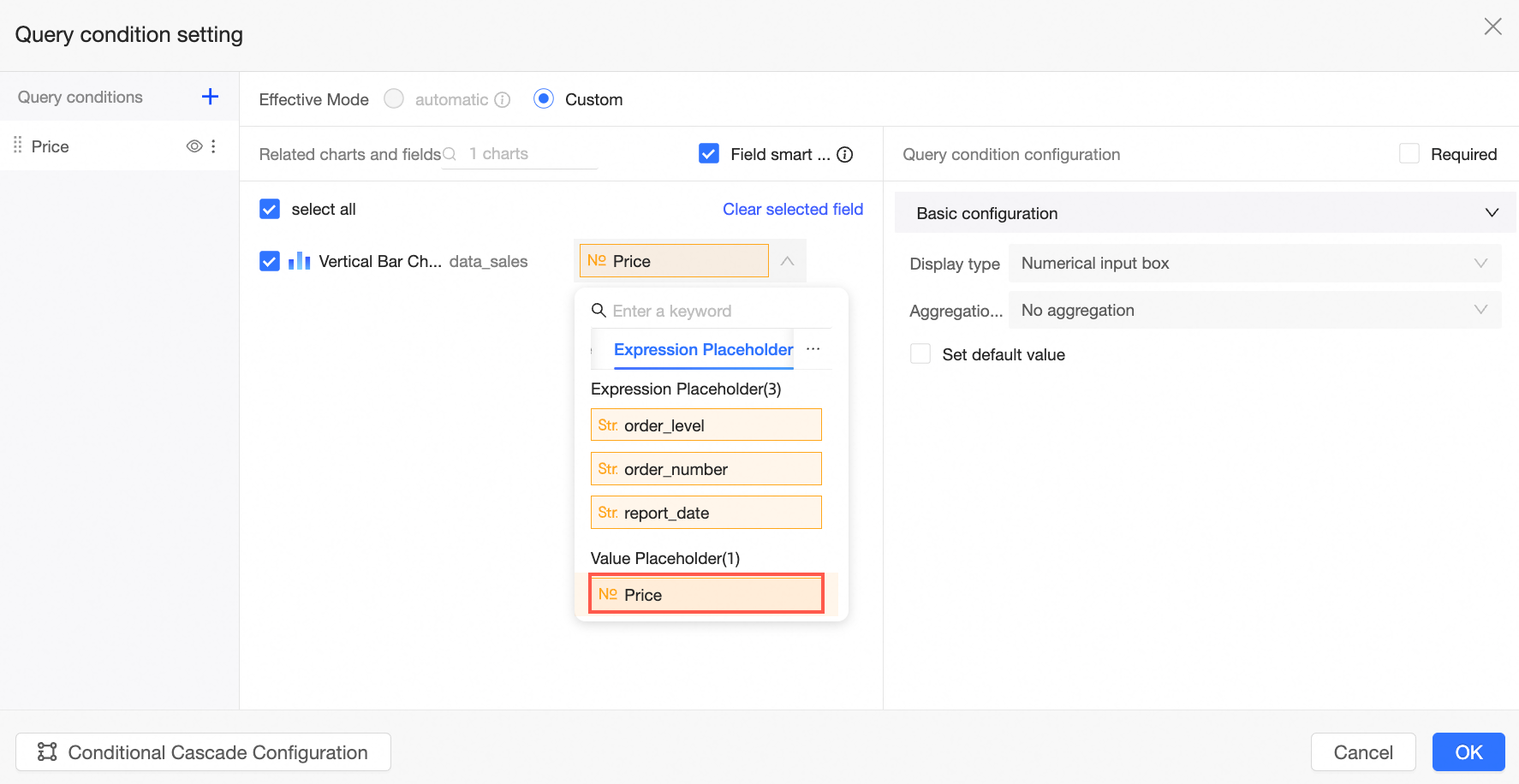
For detailed instructions and scenarios, see Placeholders.
Switch datasets
Replacement entry
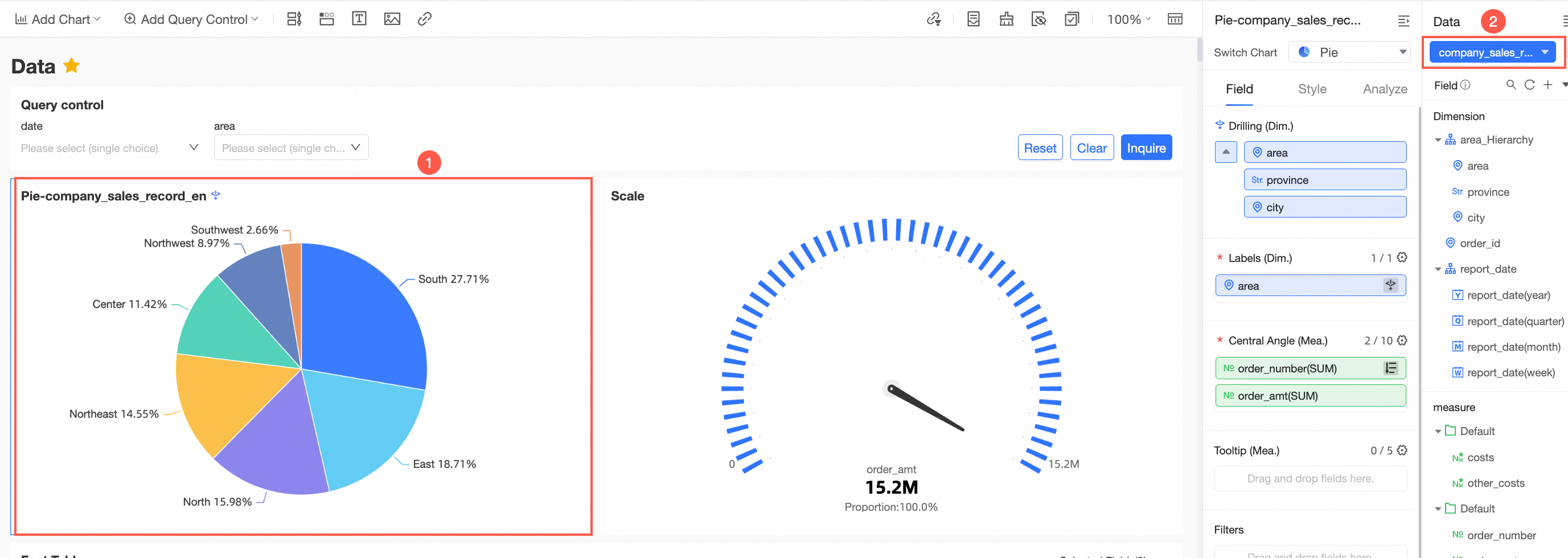
After clicking the switch box, you can toggle between used and all datasets, and clear field configurations.
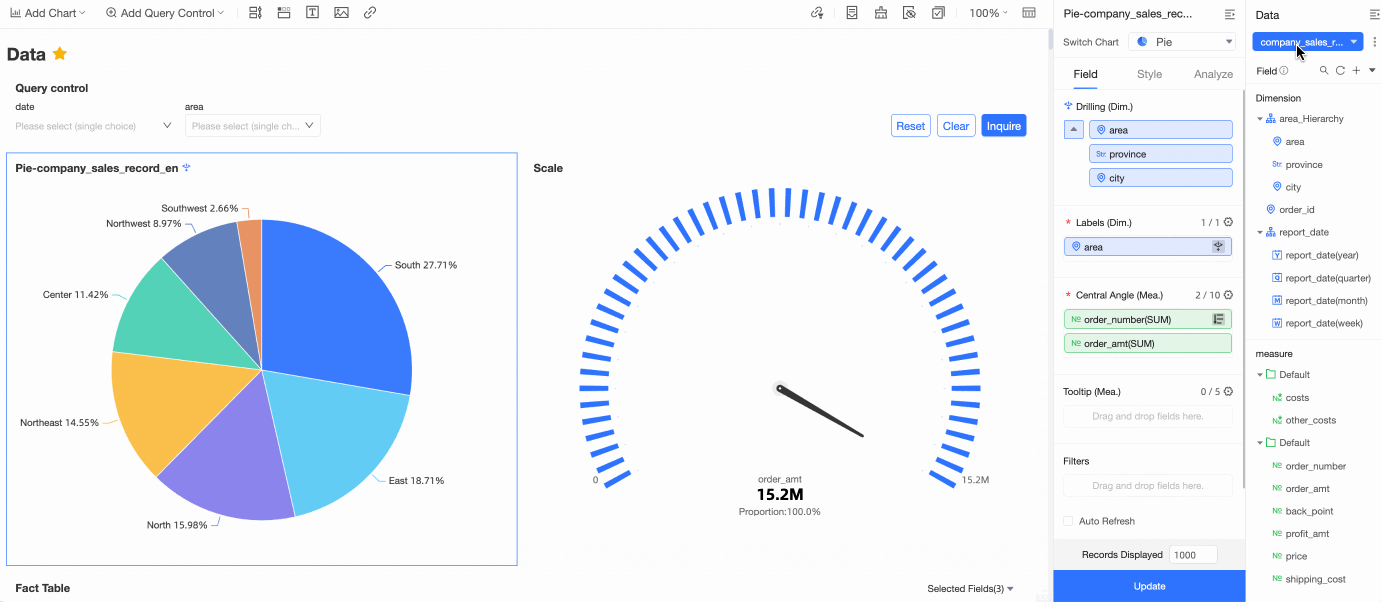
To replace a dataset while retaining field configurations, click
 and select the new dataset in the current dataset's context.
and select the new dataset in the current dataset's context. 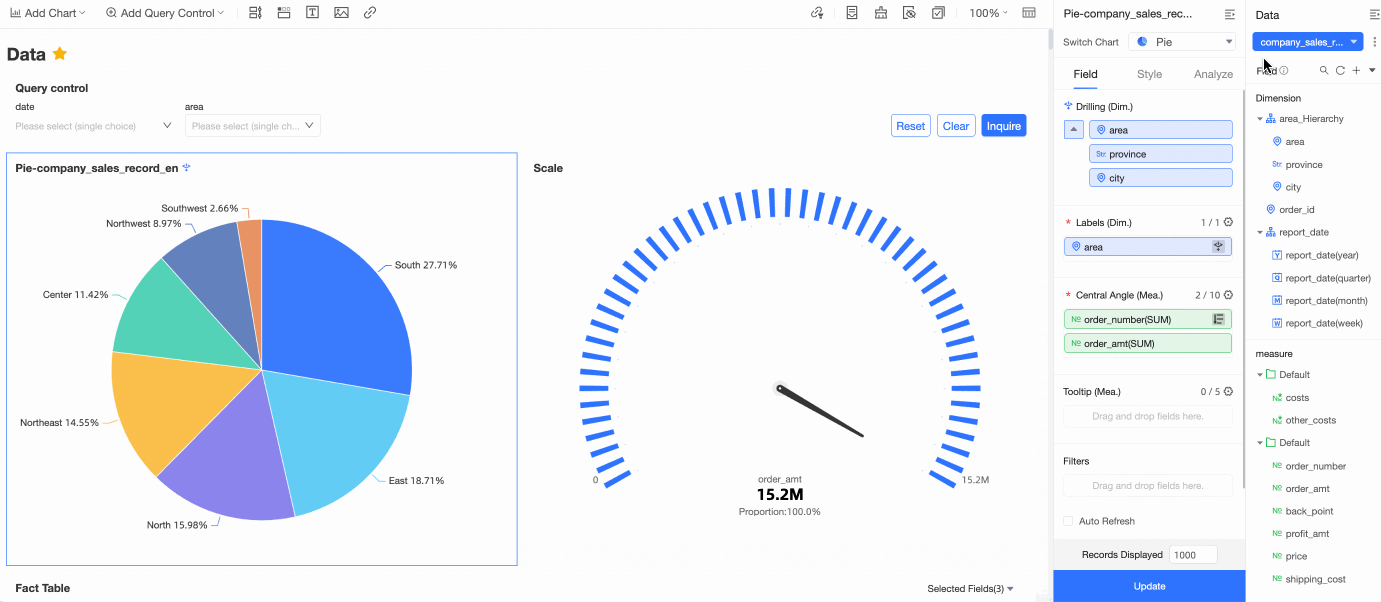
For detailed instructions, see Replace datasets.
Create datasets
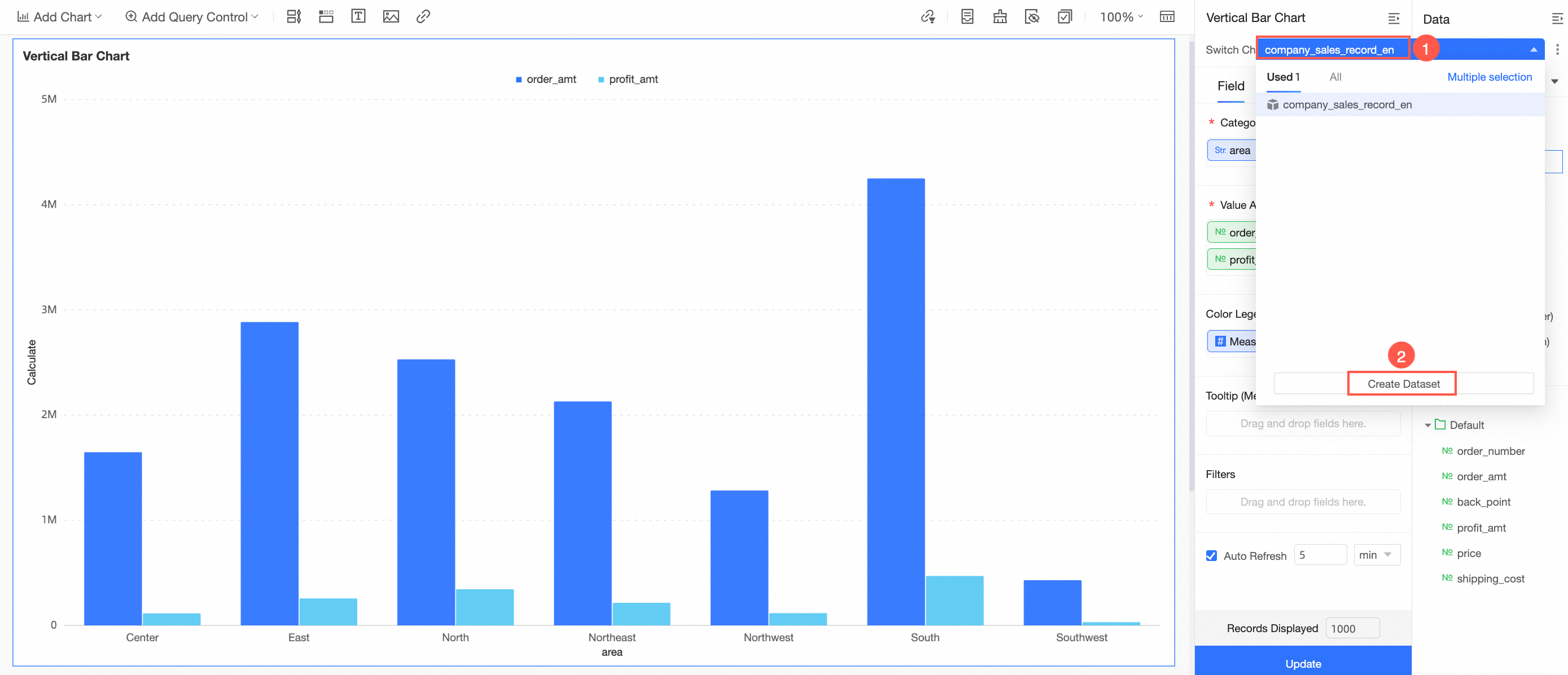
Preview data in datasets
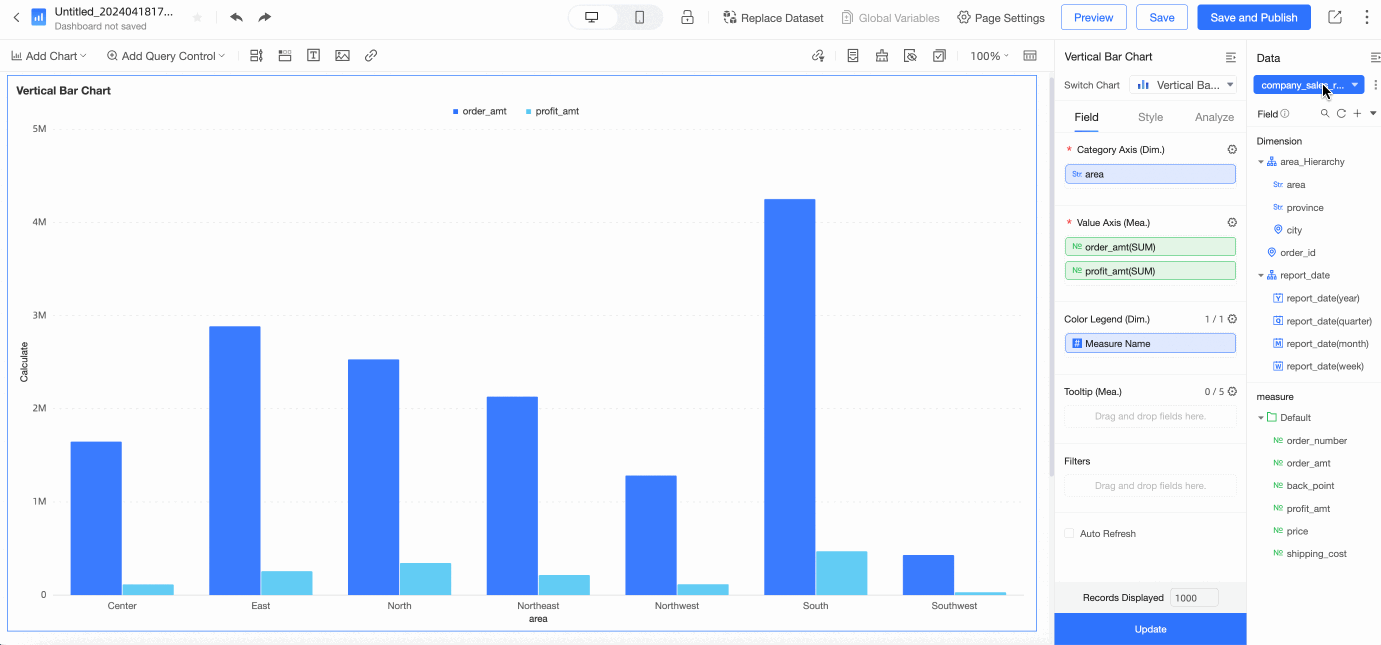
Edit datasets
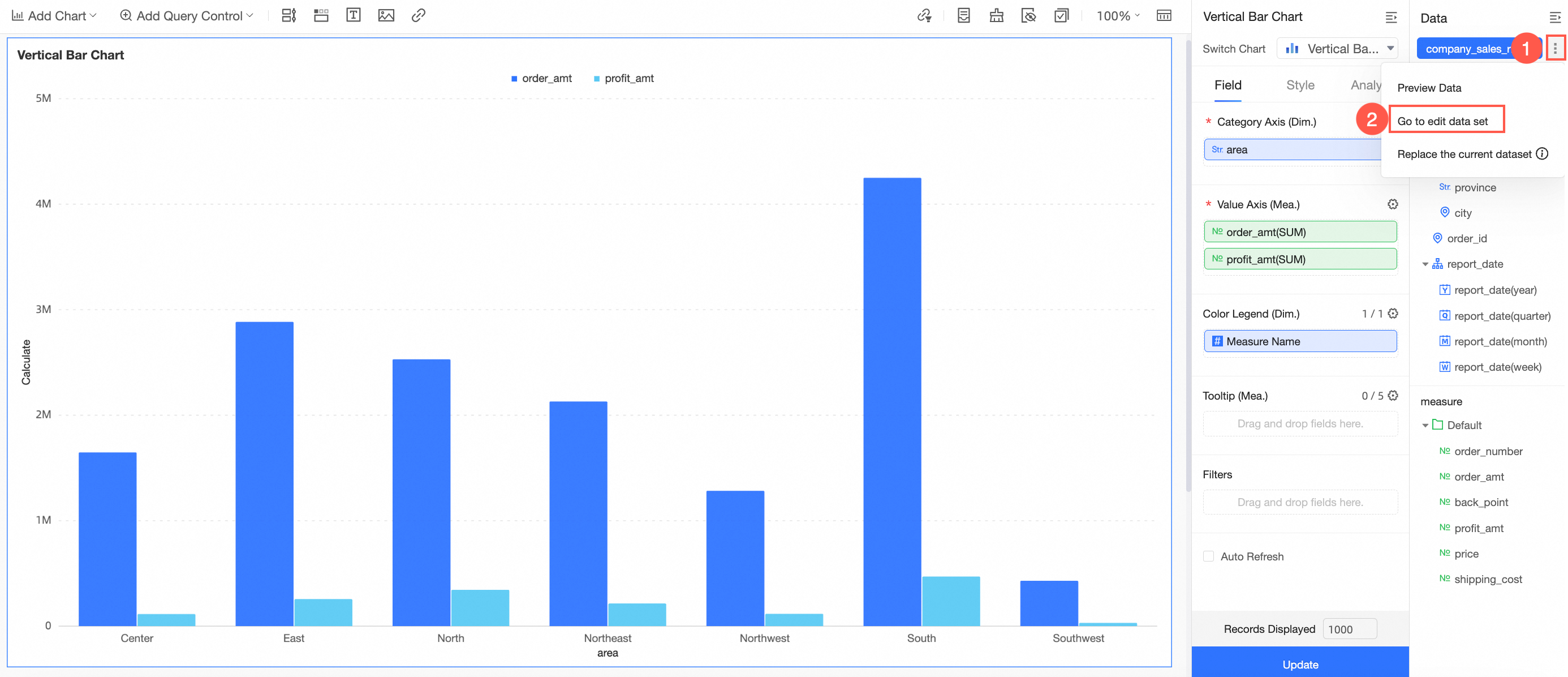
For instance, to create a geo map chart, you must designate the geographic dimension type as Geo.
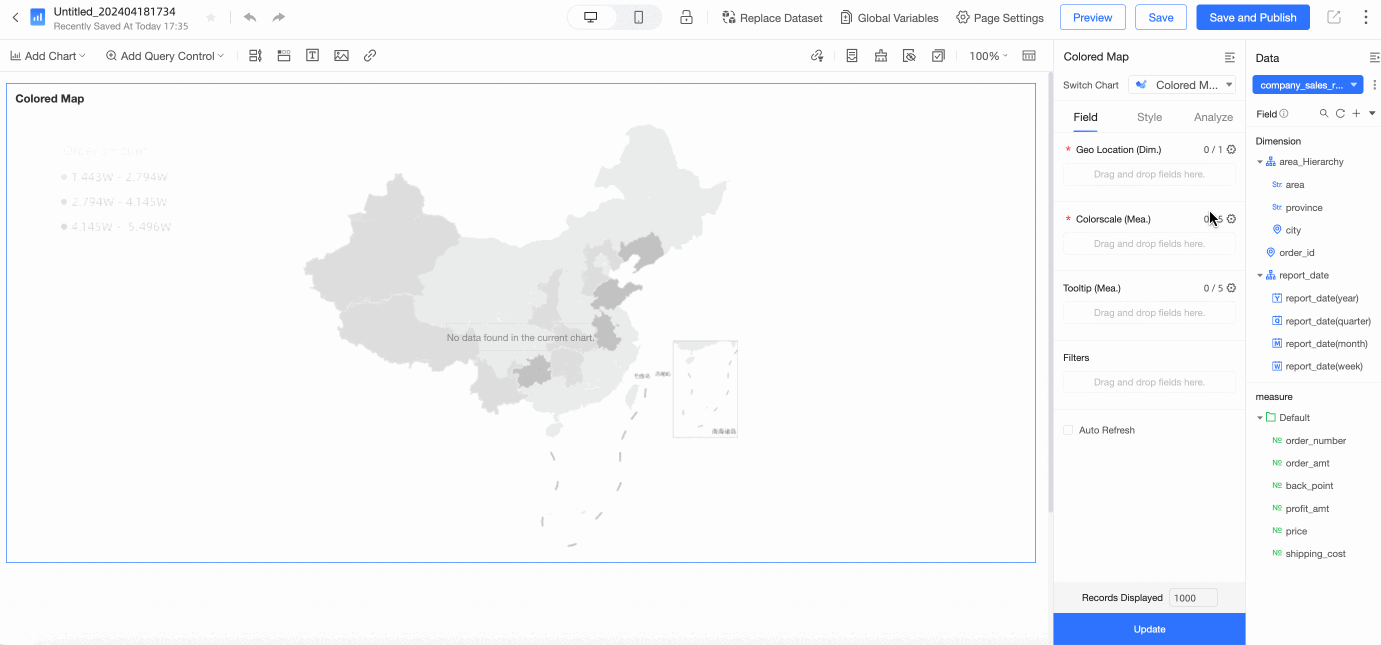
For more information on editing datasets, see Configure fields.
